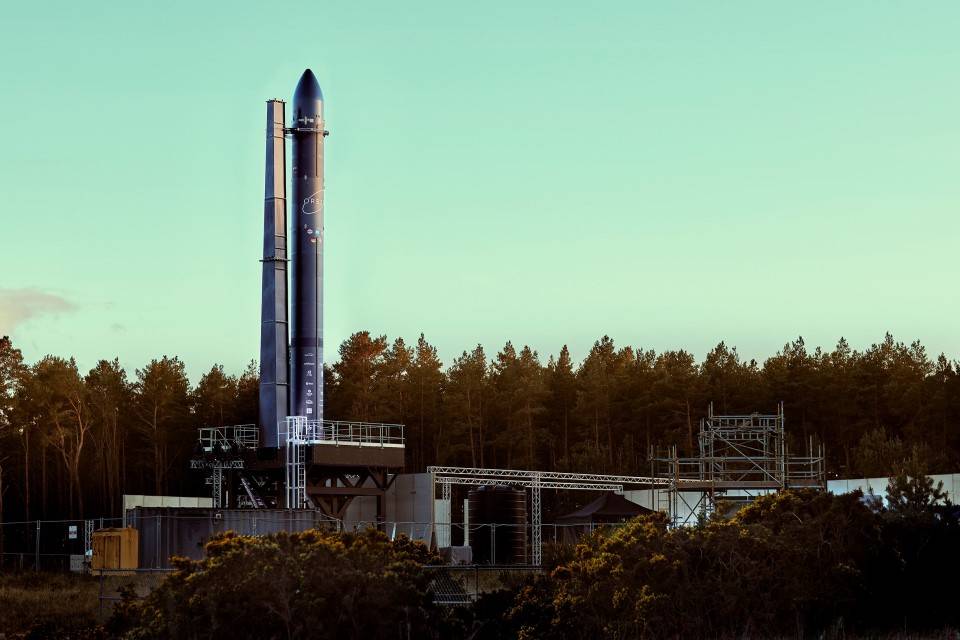Orbex recently revealed their first test launch platform at a new test facility in Kinloss, a few miles from the company’s headquarters at Forres in Moray, Scotland…reports Asian Lite News
Orbex’s Prime rocket reaching technical readiness represents a significant achievement that brings together key elements of the ground infrastructure and prototype launch vehicle for the first time and is a major step forward for the company and for the UK launch industry.
The UK Space Agency supported the development of Orbex’s Prime rocket with £5.5 million of funding, as part of the government’s plans to enable small satellite launch from UK spaceports.
With the first integration of a full scale Orbex prototype launch vehicle on a launch pad now complete, the company will enter a period of integrated testing, allowing dress rehearsals of rocket launches and the development and optimisation of launch procedures.
Orbex recently revealed their first test launch platform at a new test facility in Kinloss, a few miles from the company’s headquarters at Forres in Moray, Scotland.
Science Minister George Freeman said, “This is a hugely exciting time for the UK space and satellite sector as we count down to the first satellite launches from UK spaceports later this summer. Orbex Prime is a remarkable feat of engineering from a British rocket company, pioneering more sustainable and innovative fuels that cut carbon emissions. It is also fantastic to see Moray-based Orbex creating more high-quality jobs, demonstrating the value of our thriving space sector to support emerging clusters of innovation to help level up the whole of the UK.”
Orbex Prime will launch from Space Hub Sutherland, a new spaceport on the North Coast of Scotland. Space Hub Sutherland was the first vertical spaceport to receive planning permission in the UK and has committed to being carbon-neutral, both in its construction and operation.
Ian Annett, Deputy CEO of the UK Space Agency, said, “We are on the cusp of an historic moment, with Orbex playing a leading role in generating a brand-new launch capability in the UK, while creating opportunities for people and businesses across the country. I can’t wait to see Prime lift off from Space Hub Sutherland.”
Space Hub Sutherland is one of seven potential spaceport sites across the UK and is being developed by Highlands and Islands Enterprise. The spaceport is expected to generate around 60 jobs in Caithness and Sutherland, and more than 600 jobs in the wider region.
The UK already has a thriving space sector, employing 47,000 people and generating an income of £16.5 billion. The government’s National Space Strategy set out plans for the UK to be the leading country in Europe to offer small satellite manufacturers a direct end to end route to launch, building on our leading small satellite industry. Harnessing the opportunities provided by commercial spaceflight will create high skilled jobs and local opportunities around UK spaceports.
Josef Aschbacher, Director General of the European Space Agency, said, “I am deeply impressed with the speed at which the Orbex Prime rocket was developed. It is the first full orbital micro-launcher in Europe. But I am equally impressed by the low-carbon footprint technology applied. My sincere congratulations to the whole Orbex team for this impressive achievement.”
Orbex Prime is a 19-metre long, two-stage rocket that is powered by seven engines, that is being designed and manufactured in the UK and Denmark. The six rocket engines on the first stage of the rocket will propel the vehicle through the atmosphere to an altitude of around 80km. The single engine on the second stage of the rocket will complete the journey to Low Earth Orbit (LEO), allowing the release of its payload of small, commercial satellites into Earth’s orbit.
Chris Larmour, CEO, Orbex, said, “This is a major milestone for Orbex and highlights just how far along our development path we now are. From the outside, it might look like an ordinary rocket, but on the inside, Prime is unlike anything else. To deliver the performance and environmental sustainability we wanted from a 21st century rocket we had to innovate in a wide number of areas – low-carbon fuels, fully 3D-printed rocket engines, very lightweight fuel tanks, and a novel, low-mass reusability technology.”

